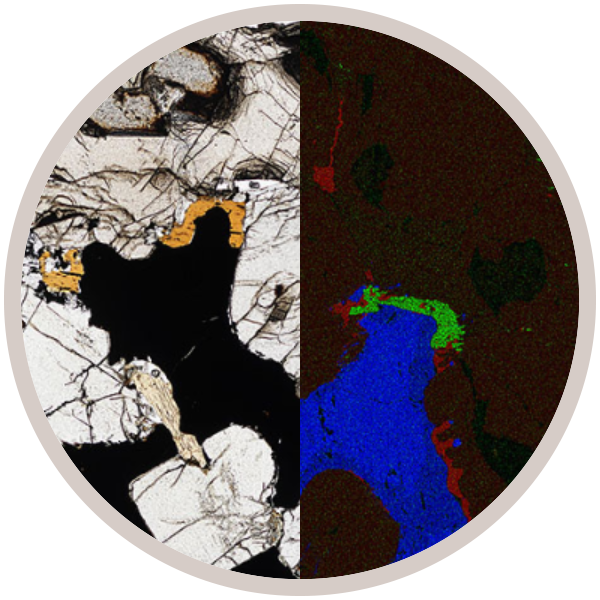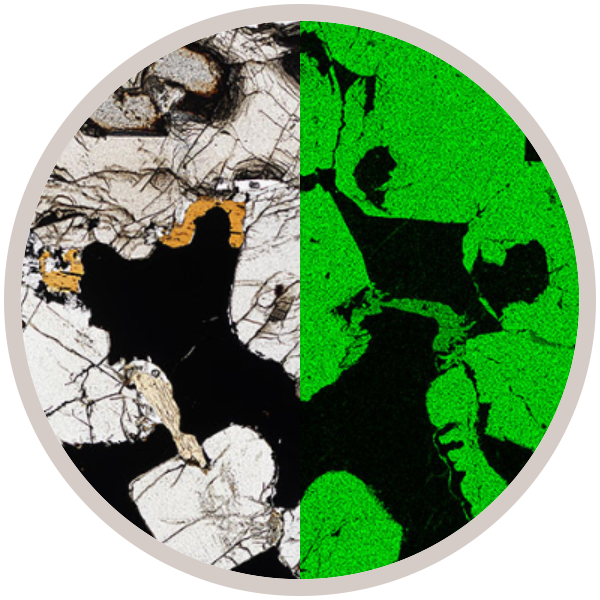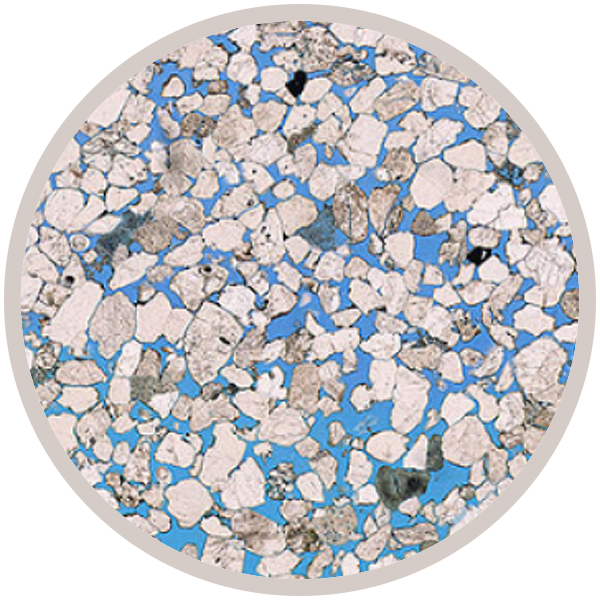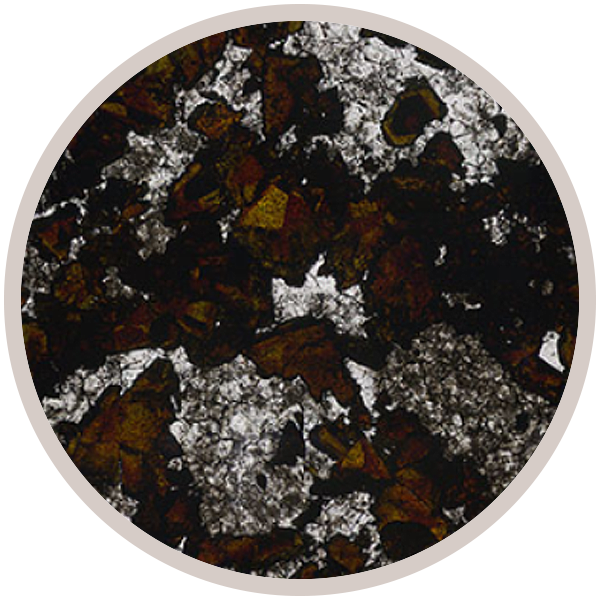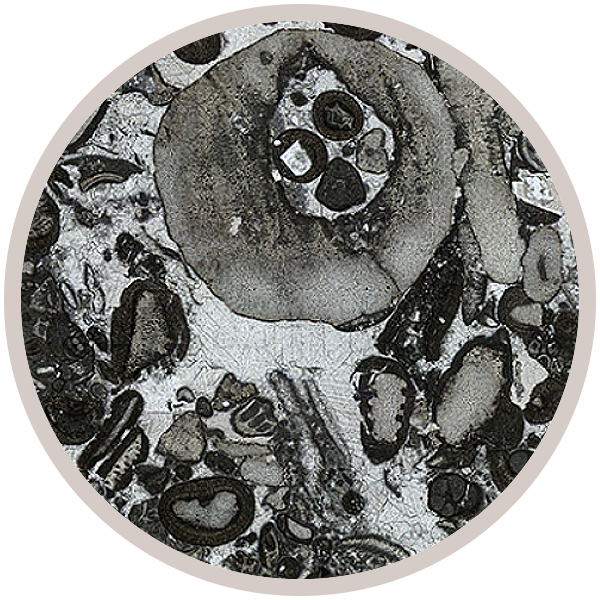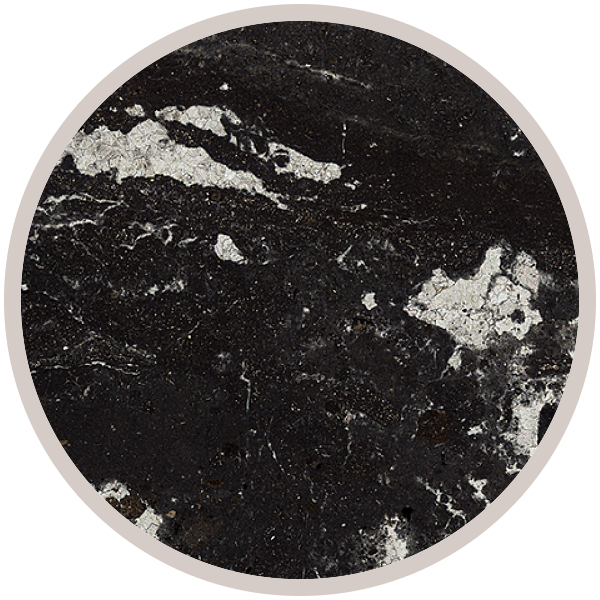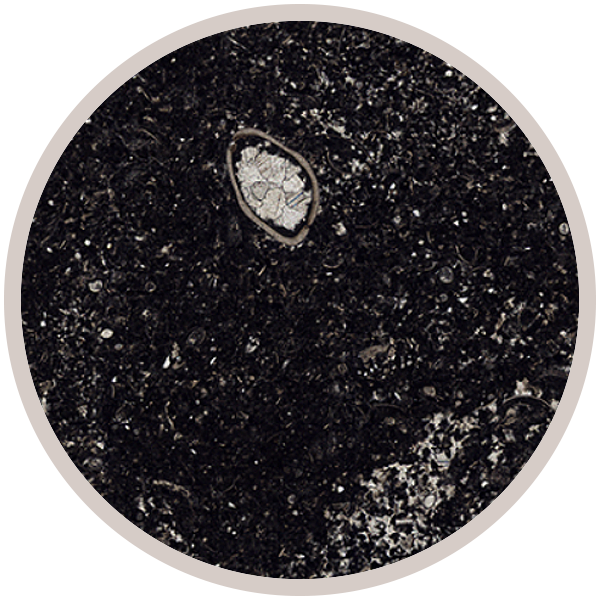
Fact sheet
This sample can be classified using the Dunham/Folk Classification. Dark grey fine grained limestone with ostracod fragments. Dark muddy lst with >10 % grains mud supported. % content: grains 20% (mostly ostracod / brachs <0.5 mm), sparite cement 10% (mainly within bivalved shells), micrite 70 % (entire micrite matrix incl peloids), no non-carbonate components. Non-skeletal grains: 95% peloids, 5% ooids, 5% grapestones, also calcispheres. Skeletal grains: 100% ostracod (most likely as small thin shells) vs. brach shells. Classification: Peloidal-rich biomicrite / wackestone. Diagenesis: Some evidence of compaction and sutured contacts. Flattened peloids. Cement crystals are non-syntaxial calcite crystals that fill previous pore space. Perhaps larger spar crystals formed after micrite mud - calcitisation.
A group of iCRAG members (UCC, TCD, NUIG and UCD) in partnership with The Open University have created a new collection of Irish rocks and associated learning materials for the Virtual Microscope of Earth Sciences.
The project which is entitled 'The Geoscience e-Laboratory (GeoLab): Developing Digital Teaching and Learning Resources for the Virtual Microscope' seeks to develop open access teaching resources in the form of interactive exercises and assessment rubrics for the Virtual Microscope. Find out more about the project at the GeoLab website.
The Collection was created using funding from the Faculty of Engineering, Mathematics and Science at Trinity College, Dublin, and the National Forum Teaching and Learning Enhancement Fund. One sample (Merensky Reef) showcasing x-ray element maps in addition to the usual PPL/XPL/REF images was funded by Prof. Balz Kamber's MetalIntelligence EU training network grant.

